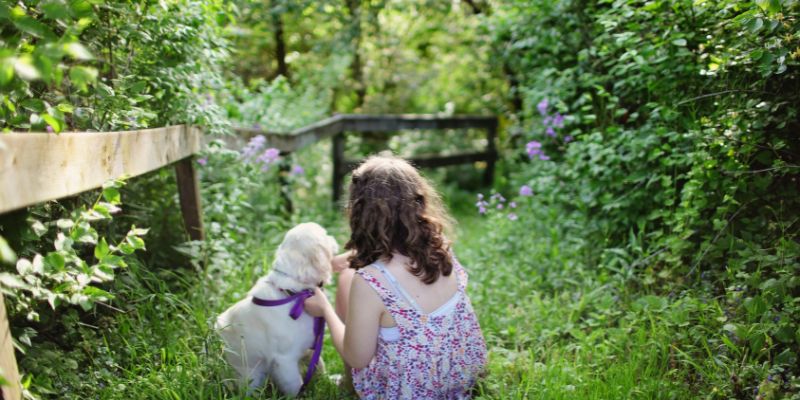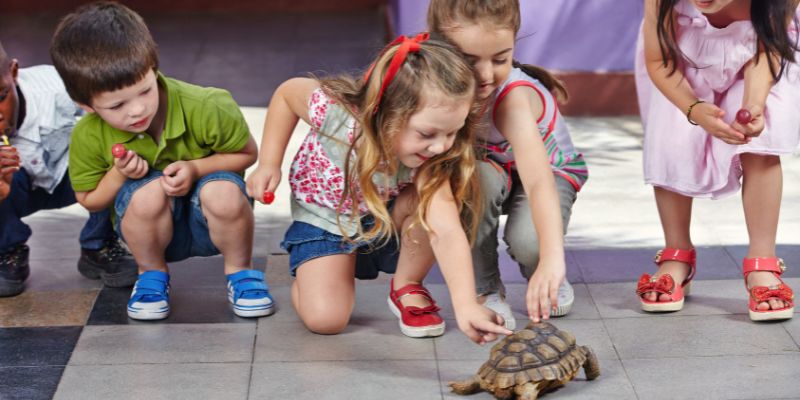10 Amazing Benefits of Animal Therapy for Children's Development
In our fast-paced digital world, children are spending less time connecting with nature and animals. However, research consistently shows that animal interactions provide incredible benefits for child development. At Swara Petting Zoo, we've witnessed these transformations firsthand through our therapeutic programs and regular visits.
The Science Behind Animal-Assisted Therapy
Animal-assisted therapy (AAT) isn't just feel-good science – it's backed by decades of research. Studies show that interacting with animals releases oxytocin (the "love hormone"), reduces cortisol (stress hormone), and activates the parasympathetic nervous system, promoting calm and healing.
1. Emotional Regulation and Stress Reduction
How It Works:
Animals provide a non-judgmental presence that helps children process emotions safely. The rhythmic motion of petting an animal naturally calms the nervous system.
Real-World Benefits:
- Reduced anxiety in social situations
- Better coping mechanisms for stress
- Improved mood stability
- Enhanced emotional vocabulary
At Swara Petting Zoo:
We've seen children who arrive feeling overwhelmed leave with peaceful smiles. Our gentle rabbits and calm sheep are particularly effective for emotional regulation activities.
2. Enhanced Social Skills and Communication
The Connection:
Animals serve as "social lubricants," making it easier for children to interact with peers and adults in a shared activity.
Developmental Gains:
- Improved verbal communication
- Better non-verbal communication reading
- Enhanced empathy and perspective-taking
- Stronger peer relationships
Success Stories:
Children who struggle with social interactions often find their voice when talking to or about animals, then transfer these skills to human relationships.
3. Boosted Self-Confidence and Self-Esteem
Why Animals Help:
Animals accept children unconditionally, providing successful interaction experiences that build confidence.
Confidence Builders:
- Successfully feeding an animal
- Having an animal approach them willingly
- Learning to care for another living being
- Overcoming initial fears
Long-Term Impact:
Children who experience success with animals often show increased willingness to try new activities and face challenges.
4. Improved Focus and Attention Span
The Mechanism:
Animals naturally capture and hold children's attention, providing practice in sustained focus without the pressure of academic tasks.
ADHD Benefits:
Research shows particular benefits for children with ADHD:
- Increased attention span during animal activities
- Better impulse control around animals
- Improved ability to follow instructions
- Enhanced mindfulness and present-moment awareness
5. Physical Development and Motor Skills
Gross Motor Skills:
- Walking animals (like our mini ponies)
- Carrying feed buckets
- Climbing and exploring animal areas
- Balance activities during pony rides
Fine Motor Skills:
- Gentle petting motions
- Precise feeding movements
- Brushing and grooming activities
- Opening feed containers
6. Cognitive Development and Learning Enhancement
Educational Opportunities:
Animal interactions provide rich learning experiences:
- Biology: Animal anatomy, life cycles, habitats
- Math: Counting animals, measuring feed, time concepts
- Language: New vocabulary, descriptive language
- Science: Animal behavior, cause and effect
Memory and Retention:
Children remember animal-related learning experiences more vividly than traditional classroom lessons.
7. Responsibility and Life Skills Development
Age-Appropriate Responsibilities:
- Ages 3-5: Gentle petting, simple feeding
- Ages 6-8: Following care instructions, helping with setup
- Ages 9-12: Understanding animal needs, basic care tasks
Life Skills Gained:
- Following through on commitments
- Understanding consequences of actions
- Developing routine and structure
- Learning patience and consistency
8. Therapeutic Benefits for Special Needs
Autism Spectrum Disorders:
- Reduced repetitive behaviors during animal interactions
- Improved eye contact and social engagement
- Enhanced sensory processing through varied textures
- Better emotional regulation
Anxiety and Depression:
- Natural mood elevation through animal contact
- Reduced isolation and withdrawal
- Increased motivation for social activities
- Improved sleep patterns after animal therapy sessions
9. Cultural and Environmental Awareness
Global Perspective:
Learning about different animals helps children understand:
- Biodiversity and conservation
- Different cultures' relationships with animals
- Environmental responsibility
- Interconnectedness of all living things
UAE Context:
Our local animals help children connect with their regional heritage while learning about global animal diversity.
10. Family Bonding and Shared Experiences
Strengthening Relationships:
Animal experiences create lasting family memories and provide natural conversation starters.
Multi-Generational Benefits:
Grandparents, parents, and children all benefit from shared animal interactions, creating stronger family bonds.
Implementing Animal Therapy at Home
Simple Strategies:
- Visit local petting zoos regularly
- Consider appropriate family pets
- Read animal-themed books together
- Watch nature documentaries
- Support local animal welfare organizations
Professional Programs:
For children with specific therapeutic needs, consider:
- Certified animal-assisted therapy programs
- Therapeutic riding programs
- Pet therapy visits in schools or hospitals
Age-Specific Benefits
Toddlers (2-3 years):
- Sensory development through different textures
- Basic empathy development
- Language development through animal sounds
- Gross motor skill development
Preschoolers (4-5 years):
- Social skill development in group settings
- Following multi-step instructions
- Emotional vocabulary expansion
- Basic responsibility concepts
School Age (6-12 years):
- Advanced empathy and perspective-taking
- Scientific thinking and observation skills
- Leadership opportunities in animal care
- Complex responsibility management
Safety and Best Practices
Ensuring Positive Experiences:
- Always supervise animal interactions
- Choose reputable, professional programs
- Respect children's comfort levels
- Teach proper animal interaction techniques
- Maintain hygiene practices
Red Flags to Avoid:
- Unsupervised animal interactions
- Forcing fearful children to participate
- Unvaccinated or unhealthy animals
- Inappropriate animal-to-child ratios
The Swara Petting Zoo Difference
Our Therapeutic Approach:
- Trained animal handlers who understand child development
- Carefully selected, gentle animals perfect for therapy work
- Structured programs designed for different developmental needs
- Safe, clean environment with proper supervision
- Flexible programming to meet individual child needs
Special Programs:
- Sensory-Friendly Sessions: For children with sensory processing needs
- Social Skills Groups: Structured activities for social development
- Confidence Building Programs: For shy or anxious children
- Special Needs Accommodations: Tailored experiences for different abilities
Research and Evidence
Key Studies:
- UCLA study showing 23% reduction in stress hormones after animal interaction
- Journal of Applied Developmental Psychology research on improved social skills
- American Academy of Pediatrics endorsement of animal-assisted therapy
- Multiple studies showing improved academic performance after animal therapy programs
Getting Started: Your Next Steps
Planning Your Therapeutic Visit:
- Assess Your Child's Needs: What areas would benefit from animal therapy?
- Choose Appropriate Programs: Match activities to your child's developmental level
- Prepare Your Child: Discuss expectations and safety rules
- Follow Up: Reinforce learning and plan regular visits
Questions to Ask Providers:
- What training do handlers have in child development?
- How are animals selected and cared for?
- What safety protocols are in place?
- How are programs adapted for different needs?
- What follow-up resources are available?
Conclusion: Investing in Your Child's Future
Animal therapy isn't just a fun activity – it's an investment in your child's emotional, social, cognitive, and physical development. The benefits extend far beyond the visit itself, creating lasting positive changes that support your child's growth and well-being.
At Swara Petting Zoo, we're committed to providing therapeutic animal experiences that nurture the whole child. Every interaction is designed to support development while creating joyful, meaningful memories.
Ready to explore the therapeutic benefits of animal interaction for your child? Contact us to discuss specialized programs tailored to your child's unique needs and developmental goals.
Interested in animal therapy for your child? Our therapeutic programs are designed by child development specialists. Call +971 50 123 4567 to learn more about our specialized offerings.



